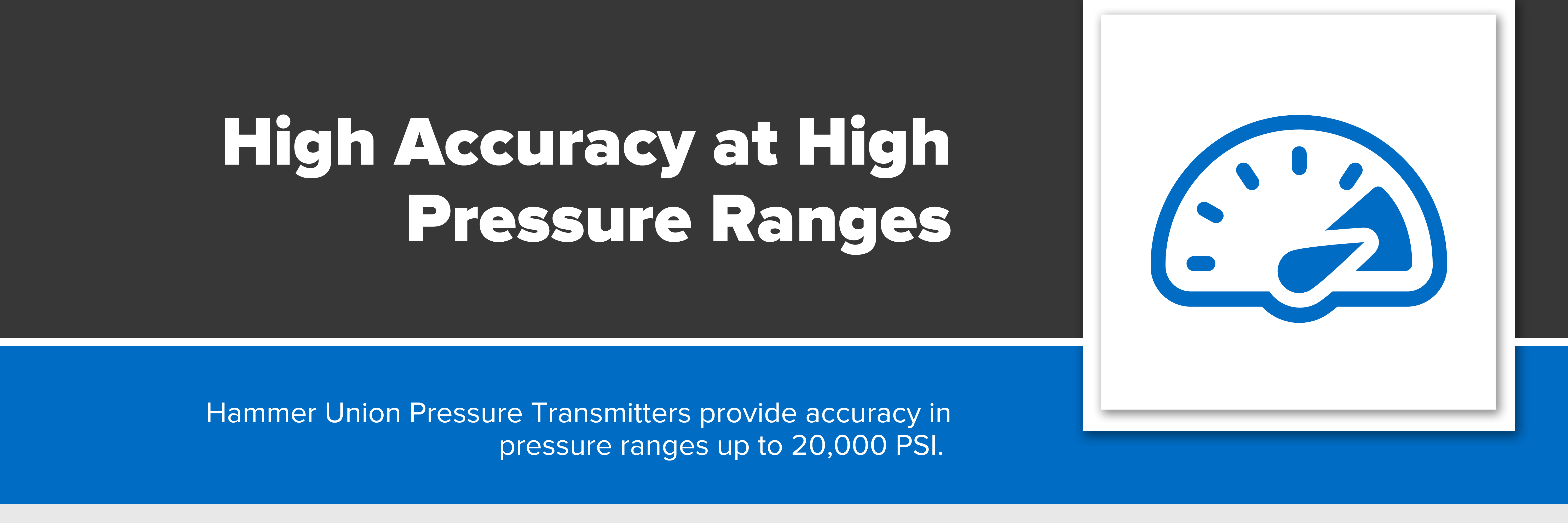What Matters for Pressure Transmitters in Oil & Gas Applications
The oil and gas industry is filled with incredibly sensitive processes that require industry-leading instrumentation to ensure the integrity of data measurement and workplace safety. This is especially true of the pressure sensors being used in oil and gas applications like fracking and offshore drilling can commonly see pressure ranges above 15,000 PSI, which means specialized pressure transmitters are needed. Not only do pressure transmitters for oil and gas drilling need to have high pressure ranges, but they need to be tough enough to withstand the vibration and rough handling in the field.
There are features to look for in pressure sensors that can help meet the demands of this industry. This blog post will address a few of those important features. We hope it is useful for those in the oil and gas industry looking for pressure transmitters to help with:
- Fracking
- Acidizing
- Mudlogging
- Offshore drilling

High Accuracy at High Pressure Ranges
Oil and gas processes typically use hammer or wing unions to make tight connections between sections of pipe. Manufacturers make pressure sensors for these applications with special hammer union fittings, known as Hammer Union Pressure Transmitters. They take great pride in their sourcing, product development, and product performance that can withstand the demands of the oil and gas industry.
As mentioned above, it is quite common for processes to see pressure ranges above 15,000 PSI. Manufacturers of most hammer union pressure transmitters make their sensors to withstand pressures up to 20,000 PSI. Accuracy is also a significant factor in choosing the right pressure sensor. Depending on the process being measured, fractions of a percent can make a huge difference in catching potential issues. For example, the Druck PTX661 Pressure Transmitter has 0.1% full-scale accuracy for pressure ranges up to 15,000 PSI. The APG 1502I HU Hammer Union Pressure Transmitter has 0.25% full-scale accuracy for pressure ranges up to 20,000 PSI. Maintaining this full-scale accuracy even into ultra high pressure ranges is what sets hammer union pressure transmitters apart from the competition. It allows operators to make any changes to the process when needed, preventing work stoppages or equipment breakdowns.

Rugged, Dependable Designs
The process media for oil and gas applications can be highly abrasive and corrosive. Pressure transmitters need to be able to maintain their performance despite these conditions. Part of the way they are able to achieve this consistency is how they are designed. Imagine a pressure sensor that has parts that are bolted together. Under high pressure and dealing with corrosive liquids, they could split and become pressurized projectiles instead. This is why, for example, APG made the bodies of their 2202 HU Hammer Union Pressure Transmitters fully welded. This also provides a level of shock resistance that most pressure sensors simply can’t beat and is necessary for the rapid set up and tear down of equipment in places like oil rigs.
What’s commonly used for wetted materials of the transmitter are extremely durable alloy metals such as Hastelloy C22 or nickel alloy. These materials are able to withstand the highly abrasive and corrosive materials and often come with industry approvals so the operators can be confident their pressure transmitter can withstand harsh sour gases. For example, APG utilizes nickel alloy that is NACE MR-01-75 and ISO 15156-3 compliant.
In some applications, the pressure sensors also need to be intrinsically safe to mitigate risk and avoid catastrophic failures. The NOSHOK 628 Hammer Union Pressure Transmitter is CSA compliant for hazardous location equipment. The Druck PTX661 Pressure Transmitter has ATEX, IECEx, NEPSI, and FM approval as well for hazardous areas. Look for these sorts of certifications when looking for hammer union pressure transmitters to make sure your process is safeguarded.
Each manufacturer also has its own unique design features that appeal to different applications. For example, Druck makes their hammer union pressure transmitters with a replaceable transmitter insert which reduces the total cost of ownership. APG uses large drain holes so that the protective housing around electrical connections won’t hold water. NOSHOK uses an Inconel X-750 diaphragm and connection which can tolerate the harsh chemical makeup of unrefined oil and provides the sensor with better protection and life expectancy. ScanSense utilizes an optional temperature sensor to eliminate long-term signal drift in the field.
These high-end pressure transmitters are designed to be as precise and fast as possible so that operators can make important, real-time decisions in the field. Part of this precision comes from the impact of drift, hysteresis, and response time. Make sure to check your manufacturer’s specifications so that your pressure transmitters are doing the job they need to. For example, the ScanSense Wing Union Pressure Transmitter has a < 2 millisecond response time, < +/- 0.05% FS hysteresis, and < +/- 0.1% FS/year drift.

Still Need Help? Call an Engineer Today.
If this blog still leaves you wondering what type of industrial instrumentation would work best for your application, our engineers would be happy to help you. Give them a call at 1-800-884-4967. Or, you can shop for a wide range of flow industrial instrumentation from top brands and even configure your product online. We offer free lifetime tech support with every product sold.








